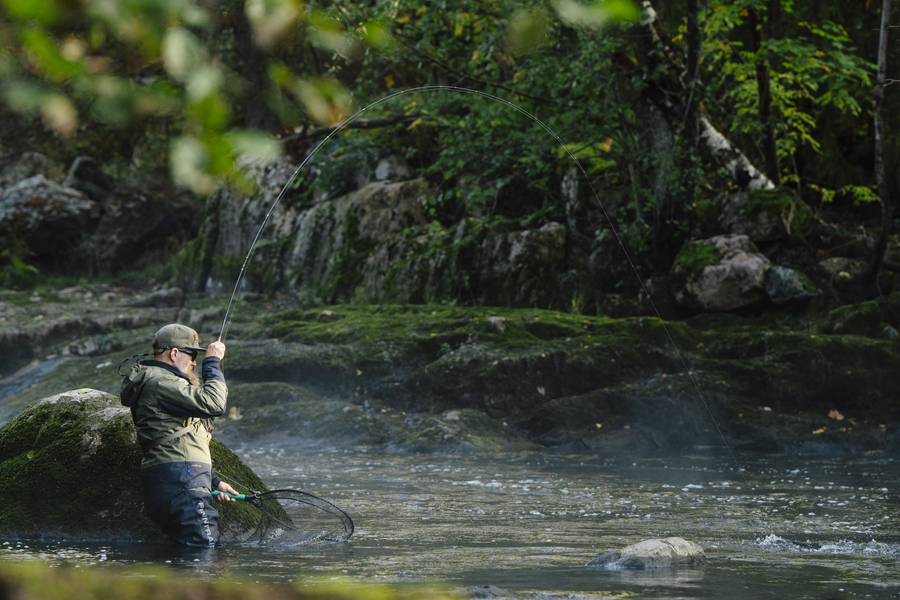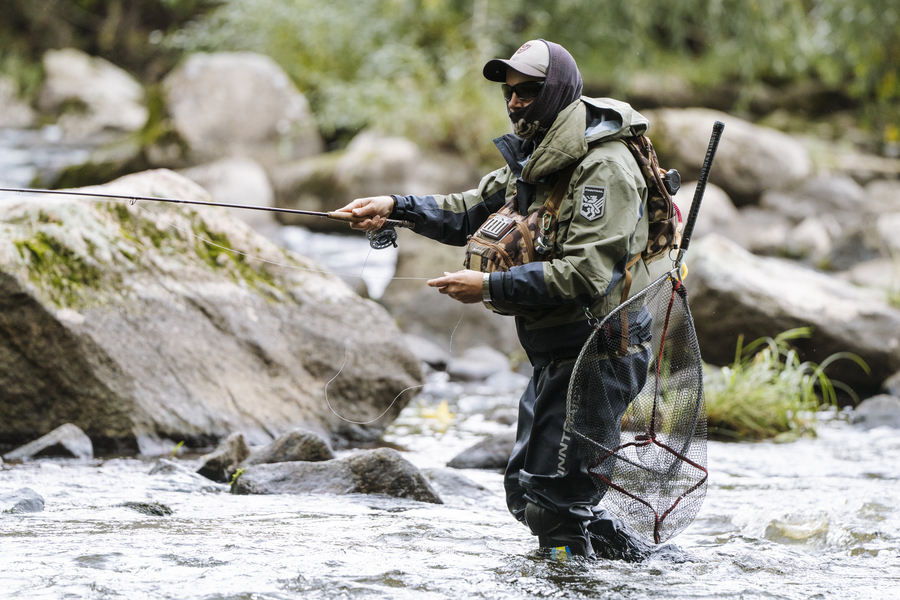How to Choose the Right Fly Rod Weight
Choosing the right fly rod can be overwhelming, especially for beginners. One of the most important aspects to understand is fly rod weight — a number that significantly affects your rod’s performance, casting ability, and suitability for different fishing conditions. Whether you're targeting brook trout on a stream or casting to bonefish on the flats, understanding how to choose the right fly rod weight is key to your success. In this comprehensive guide, we'll break down everything you need to know about choosing fly rod weight, provide real-world examples, and help you feel confident in selecting the right rod for your fishing needs.

What Does Fly Rod Weight Mean?
Before diving into how to choose fly rod weight, let’s define what it actually means. Fly rod weight doesn’t refer to how heavy the rod feels in your hand. Instead, it refers to the weight of the fly line that the rod is designed to cast. For example, a 5-weight fly rod is meant to cast a 5-weight fly line. These weights are standardized by the American Fishing Tackle Manufacturers Association (AFTMA), so a 5-weight from one brand should work the same as a 5-weight from another.
Matching the rod, reel, and line weight is essential for efficient casting and control. Mismatched setups can result in poor performance, fatigue, and missed opportunities. That's why learning how to choose fly rod line weight is just as important as choosing the rod itself.
Why Fly Rod Weight Matters
Choosing the right fly rod weight is critical for:
-
Casting Distance and Accuracy: Lighter rods cast delicate presentations at short distances, while heavier rods handle wind and cast further.
-
Fish Species: Bigger fish require more backbone; smaller fish need finesse.
-
Fly Size: Larger flies require more power to cast.
-
Water Conditions: Wind, current, and cover all play a role in selecting the right gear.
In short, choosing a fly rod weight that suits your fishing environment and target species will dramatically improve your fly fishing experience.
Fly Rod Weight Chart: A Quick Reference
Here’s a basic guide to help with choosing fly fishing rod weight based on common scenarios:
|
Fly Rod Weight |
Best For |
|
1-3 wt |
Small streams, panfish, very small flies |
|
4 wt |
Small trout, small streams, technical casting |
|
5 wt |
All-around trout rod, dry flies, nymphs |
|
6 wt |
Larger trout, bass, streamers, light wind |
|
7 wt |
Bass, steelhead, light saltwater species |
|
8 wt |
Bonefish, redfish, heavy bass, salmon |
|
9-10 wt |
Pike, muskie, permit, tarpon, heavy saltwater |
This chart is a great starting point, but real-world use often depends on nuances. That’s why understanding how to choose the right fly rod weight requires context.
How to Choose Fly Rod Weight Based on Target Species
Arguably the most important factor in choosing the right fly rod weight is what species you plan to target. Here are some quick guidelines:
-
Trout Fishing: A 4 to 6 weight is ideal. If you're fishing big western rivers with wind and streamers, go for a 6. For small Appalachian creeks, a 3 or 4 weight is better.
-
Bass Fishing: Bass often require larger flies and heavier lines. A 6 or 7 weight provides enough backbone and casting power.
-
Panfish: 2 to 4 weights make panfish fun while allowing light presentations.

Consider Your Fly Size and Style
Fly size is closely tied to how to choose the right fly weight rod. Delicate dry flies used for sipping trout require finesse and precision — something best handled by a lighter rod. On the other hand, throwing weighted streamers or poppers means you’ll want a rod with more power.
Here’s a quick reference for matching fly size to rod weight:
-
Size 18-24 dries: 2-4 wt
-
Size 14-18 dries/nymphs: 4-5 wt
-
Size 10-14 nymphs/streamers: 5-6 wt
-
Size 6-10 streamers/bass bugs: 6-7 wt
-
Size 2-6 saltwater flies: 8-10 wt
Understanding how to choose fly rod line weight allows you to maximize performance based on your fly selection. Don't force a rod to cast flies it's not designed for — match the gear to the job.
Water and Weather Conditions Matter
Windy days, big rivers, and high lakes often demand heavier gear. Knowing how to choose the right fly rod weight for your environment ensures success regardless of conditions. For example:
-
Windy Conditions: Go up a weight class (e.g., 5 wt to 6 wt)
-
Wide Rivers or Lakes: Longer casts benefit from rods with more power (6-7 wt)
-
Tight Cover: Choose lighter, shorter rods for precision (2-4 wt)
Understanding how external factors impact your casting environment is crucial in choosing a fly rod weight that’s functional and adaptable.
The “Do-It-All” Fly Rod Weight
If you’re just getting started and only buying one rod, most experts agree a 5-weight rod is the best all-around option. It’s the sweet spot that allows you to fish dry flies, nymphs, and even smaller streamers for trout and other freshwater species.
When clients ask, “Which fly rod weight to choose for general fly fishing?”, the answer is almost always 5 wt. It balances finesse with enough power for a wide range of fly sizes and species.
Match Rod Weight with Line and Reel
Once you understand how ro choose fly rod weight, don’t forget to match it with a corresponding reel and line. A balanced setup feels better in hand and casts more accurately.
-
Use 5 wt line with a 5 wt rod and reel
-
Use a reel that holds the correct line weight and has an appropriate drag system for the fish you’re targeting
-
Avoid over-lining unless you have a specific reason (like short casting)
Knowing how to choose fly rod line weight helps you complete your setup and avoid performance issues.
Practical Tips for Choosing Fly Rod Weight
Still not sure how to make the call? Here are a few final tips to guide you through choosing fly rod weight:
-
Ask Yourself Where and What You’ll Fish Most: Pick gear that suits your regular environment, not rare trips.
-
Try Before You Buy: Visit local fly shops and test-cast different weights.
-
Talk to Locals: Anglers with experience in your region can give great advice.
-
Start with Versatility: Go with a 5 or 6 wt if you're unsure. You can specialize later.
-
Don’t Forget the Fly Size: Always consider the type of flies you enjoy fishing most.
Final Thoughts
How to choose the right fly rod weight comes down to balancing the fish you want to catch, the flies you plan to throw, and the water you’ll be fishing. Whether you're choosing fly fishing rod weight for a local trout stream or selecting your first saltwater fly rod, having a clear understanding of the factors involved will make a massive difference. Also read abou how to choose the right bait.
Now that you know how to choose a fly rod weight, explore FINNTRAIL’s expert-approved gear designed for anglers who demand performance, reliability, and comfort. No matter what species you're after, we’re here to make sure your setup is dialed in for every cast.





